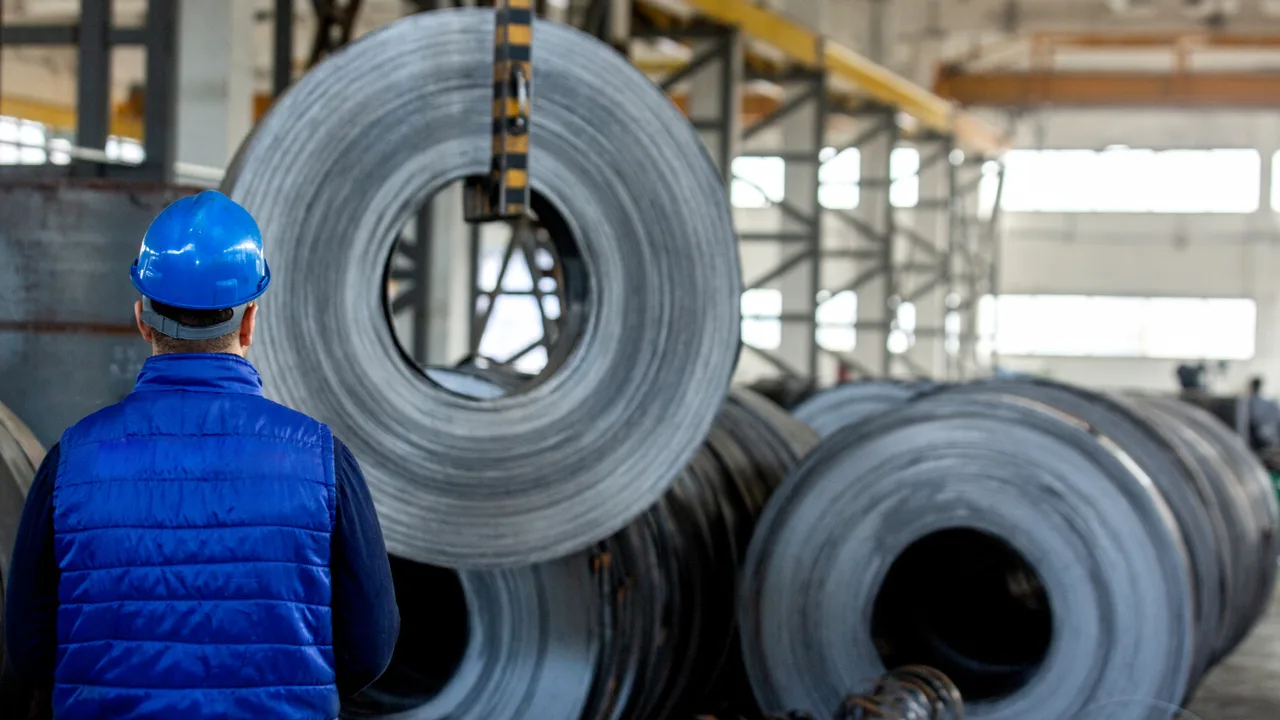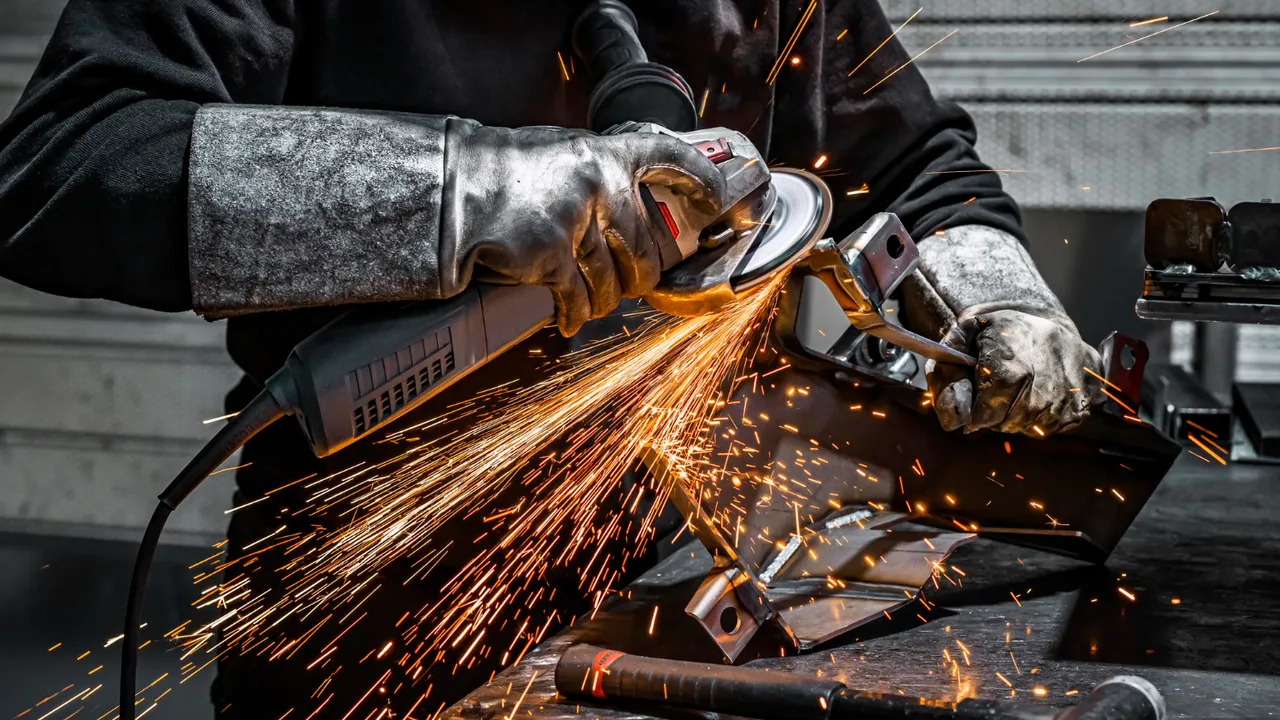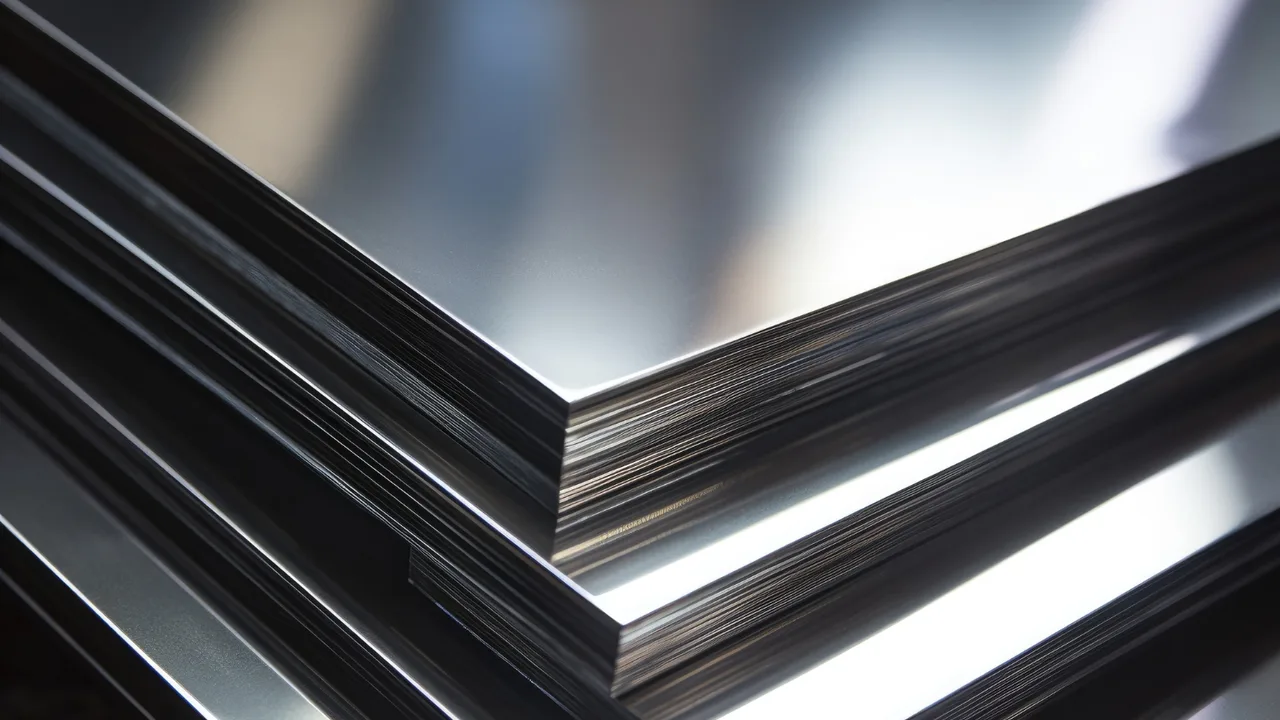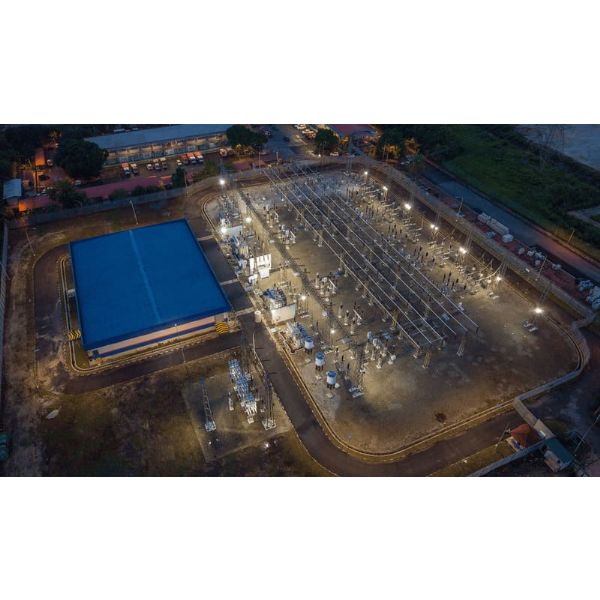Q355B steel is one of the most widely used structural steels in modern engineering and manufacturing. Known for its balance of strength, ductility, and weldability, Q355B offers excellent performance for heavy-duty applications ranging from bridges and buildings to machinery and energy equipment. As part of the GB/T 1591 standard in China, it stands out as a versatile material that meets the demands of both domestic and international markets.
Introduction to Q355B Steel
The Q-series steels under China’s national standard GB/T 1591 are designed for structural use, each grade optimized for specific yield strengths and toughness requirements. Among them, Q355B sits between the more common Q345B and higher-strength grades like Q460B. Its yield strength of 355 MPa and excellent weldability make it a preferred option for projects that demand reliability, cost-effectiveness, and structural integrity.
Due to its consistent performance, Q355B steel is used across construction, machinery fabrication, energy, transportation, and infrastructure development. Engineers favor it for both low-rise and high-rise steel structures where strength and ductility must coexist.
What Does “Q355B” Mean?
Decoding the Grade Designation
The naming convention of Q355B follows a specific logic within the GB/T 1591 standard:
- Q stands for “Qu,” referring to the yield strength of the steel.
- 355 represents the minimum yield strength in megapascals (MPa).
- B indicates the impact test quality grade, showing that the steel has been tested at 20°C for toughness.
In essence, Q355B means “a structural steel with a yield strength of 355 MPa, Grade B quality.”
Comparison of Quality Grades (A, B, C, D, E)
The GB/T standard includes several sub-grades, ranging from A to E, each tested at progressively lower temperatures to ensure toughness:
- Q355A – Tested at 20°C
- Q355B – Tested at 0°C
- Q355C – Tested at -20°C
- Q355D – Tested at -40°C
- Q355E – Tested at -60°C
Among these, Q355B offers a balanced performance for general structural use without the added cost of ultra-low-temperature grades, making it the most common variant for engineering and construction projects.
Q355B Chemical Composition
Main Elements and Alloy Additives
Like most structural steels, Q355B derives its outstanding balance of strength, ductility, and weldability from a carefully optimized combination of primary and secondary alloying elements. Each element plays a distinct role in refining the microstructure and enhancing specific mechanical or chemical properties of the steel. The synergy among these elements is what gives Q355B its reputation as a reliable, high-performance material for structural engineering.
Primary Elements in Q355B Steel
The main chemical constituents—carbon (C), manganese (Mn), silicon (Si), phosphorus (P), and sulfur (S)—form the foundation of Q355B’s mechanical characteristics. When precisely controlled, these elements provide strength and toughness while maintaining weldability and formability.
- Carbon (C) – Carbon is the key strength-giving element in steel. In Q355B material, carbon content is typically limited to ≤ 0.20%. This low-to-medium carbon range ensures an excellent balance between tensile strength and ductility. Too much carbon would increase hardness but reduce weldability and impact toughness, so tight control is essential.
- Manganese (Mn) – Present in amounts between 1.0 % – 1.6 %, manganese acts as a powerful deoxidizer and helps improve hardenability and tensile strength. It also counteracts the harmful effects of sulfur, reducing brittleness and improving hot-working performance during rolling or forging.
- Silicon (Si) – Added up to 0.55 %, silicon serves primarily as a deoxidizing agent during steelmaking. It also contributes modestly to strength and elasticity while enhancing the steel’s ability to resist oxidation and scaling at high temperatures.
- Phosphorus (P) – Phosphorus is maintained below 0.035 % because, while it can slightly increase strength and corrosion resistance, it significantly reduces toughness if not controlled. Excess phosphorus can cause cold brittleness and cracking during welding or forming operations.
- Sulfur (S) – Like phosphorus, sulfur is carefully limited to ≤ 0.035 %. In small amounts it can improve machinability, but excessive sulfur forms sulfide inclusions that negatively affect weldability and impact strength. Through advanced refining techniques, modern mills keep sulfur levels extremely low for superior toughness.
Secondary Alloying Elements (Trace Additives)
To fine-tune performance, Q355B steel often includes trace levels of additional alloying elements. These elements strengthen the steel’s resistance to wear, corrosion, and fatigue, ensuring longevity even in harsh environments.
- Nickel (Ni) – Improves toughness, ductility, and corrosion resistance, especially under low-temperature conditions. Nickel also refines grain structure, contributing to a more uniform and stable microstructure.
- Chromium (Cr) – Enhances hardenability and increases resistance to wear and oxidation. Chromium contributes to the formation of a passive oxide layer, which slows down surface corrosion in exposed applications such as bridges and industrial buildings.
- Copper (Cu) – Acts as a corrosion inhibitor, improving the steel’s ability to withstand atmospheric and marine exposure. Copper also provides a subtle strengthening effect through precipitation hardening in the ferritic matrix.
- Niobium (Nb) – A micro-alloying element used in small amounts (≤ 0.03 %) to refine grain size and enhance yield strength through precipitation hardening. Niobium also improves weld heat-affected-zone (HAZ) toughness, ensuring structural reliability after welding.
- Vanadium (V) – Promotes fine grain size and precipitation strengthening, significantly improving the steel’s toughness and fatigue resistance. Even in small concentrations, vanadium contributes to higher yield strength without sacrificing ductility.
- Titanium (Ti) – Occasionally added in trace amounts to stabilize carbon and nitrogen, forming titanium carbides or nitrides. This prevents unwanted grain growth during heat treatment and enhances structural uniformity.
Synergistic Effects of Alloying Elements
The interaction among these elements determines the microstructure of Q355B steel—typically a fine mixture of ferrite and pearlite. This microstructure provides a superior combination of strength and plasticity while maintaining low internal stresses. Manganese and silicon work together to increase toughness, while micro-alloying elements like niobium and vanadium control grain size, preventing brittleness and distortion during forming or welding.
Another key benefit of this alloy design is a relatively low carbon equivalent (Ceq), usually below 0.45 %. This allows Q355B to achieve excellent weldability and formability, enabling seamless fabrication into beams, columns, or trusses for industrial and civil structures.
Typical Chemical Composition Table
| Element | Content (%) | Function |
|---|---|---|
| C | ≤ 0.20 | Increases strength and hardness |
| Mn | 1.0 – 1.6 | Improves toughness and strength |
| Si | ≤ 0.55 | Acts as a deoxidizer |
| P | ≤ 0.035 | Excess causes brittleness; strictly limited |
| S | ≤ 0.035 | Improves machinability but may reduce weldability |
| Cu, Ni, Cr | ≤ 0.3 each | Enhance corrosion resistance |
This balanced composition gives Q355B steel its desirable combination of strength, ductility, and weldability while maintaining excellent fabrication performance for industrial applications.
Mechanical Properties of Q355B Steel

Key Performance Metrics
The mechanical properties of Q355B make it suitable for a broad range of load-bearing structures. It provides high yield and tensile strength without compromising on elongation and impact toughness.
| Property | Unit | Typical Value |
|---|---|---|
| Yield Strength | MPa | ≥ 355 |
| Tensile Strength | MPa | 470 – 630 |
| Elongation | % | ≥ 20 |
| Impact Energy (V-notch, 20°C) | J | ≥ 27 |
The combination of strength and toughness ensures that Q355B performs well under dynamic loads, making it ideal for bridges, cranes, and high-rise frameworks where reliability is crucial.
Comparison with Q345B and Q460B
While Q345B remains one of the most used structural steels in China, Q355B provides an upgrade in yield strength and toughness without drastically increasing cost. It can replace Q345B in many applications to achieve better performance. Compared to Q460B, Q355B offers slightly lower strength but greater ease of welding and forming, making it more cost-effective for general use.
Manufacturing Process and Standards
Production Standards
Q355B steel is manufactured under the provisions of the GB/T 1591-2018 standard, which governs the mechanical properties, chemical composition, and delivery conditions of high-strength low-alloy structural steels in China. This standard ensures that Q355B meets strict yield and tensile strength requirements, along with consistent performance across varying product forms such as plates, coils, profiles, and structural sections.
The GB/T 1591 standard classifies Q-series steels (Q235, Q345, Q355, Q460, etc.) by their yield strength, providing engineers with predictable mechanical characteristics for structural design. Within this framework, Q355B offers an ideal balance of strength and ductility, making it a practical choice for welded and bolted structures.
Depending on project requirements and export destinations, Q355B material can also comply with international equivalents such as:
- EN 10025 S355JR/S355J2 – European structural steel grade with similar mechanical properties.
- ASTM A572 Grade 50 – U.S. equivalent widely used for construction and infrastructure projects.
- JIS SM490A/SM490B – Japanese equivalents offering similar composition and toughness.
This cross-standard compatibility allows Q355B to be used confidently in international projects that demand compliance with multiple global norms.
Steelmaking and Rolling Process
The manufacturing of Q355B steel begins with carefully selected raw materials—iron ore, scrap steel, and alloying elements—processed in either a basic oxygen furnace (BOF) or an electric arc furnace (EAF). These modern steelmaking methods ensure efficient refining, precise control of chemical composition, and minimal impurities.
During the smelting stage, oxygen is blown into the molten metal to reduce carbon and remove unwanted elements like sulfur and phosphorus. Alloying elements such as manganese, silicon, nickel, or vanadium may then be added to achieve the required mechanical properties.
Hot Rolling and Normalizing
Once refined, the molten steel is continuously cast into billets or slabs, which are reheated and passed through rolling mills to produce plates, coils, beams, and other profiles. The hot rolling process refines the grain structure and enhances the steel’s toughness and formability. Depending on the final application, Q355B products may be supplied in:
- Hot-Rolled Condition: Used for general fabrication and welded structural components.
- Normalized Condition (N): Heat-treated at approximately 900°C to refine grain size and improve toughness.
- Thermo-Mechanically Controlled Rolled (TMCP): A more advanced process that enhances both strength and weldability while reducing internal stresses.
Typical Q355B thicknesses range from 6 mm to 100 mm for plates, with coil widths between 1200 mm and 2500 mm. Structural sections such as H-beams, angles, and channels are also produced to meet engineering design requirements.
Microstructure and Mechanical Consistency
The microstructure of Q355B, primarily composed of fine-grained ferrite and pearlite, ensures excellent mechanical consistency across different thicknesses. The normalizing process helps eliminate residual stresses from rolling and produces uniform toughness, making it suitable for applications subject to dynamic loading or temperature fluctuations.
Quality Control and Certification
To guarantee performance reliability, every batch of Q355B steel undergoes rigorous quality inspection throughout production. Reputable steel mills maintain integrated quality management systems (ISO 9001 certified) and traceability protocols to monitor every stage of steelmaking, from raw material input to final product testing.
Each batch is accompanied by a Mill Test Certificate (MTC) or Inspection Certificate 3.1 in accordance with EN 10204 standards. The MTC typically includes:
- Chemical composition analysis (C, Mn, Si, P, S, etc.)
- Mechanical test results (yield strength, tensile strength, elongation)
- Impact test results at specified temperatures (for Grade B: 0°C)
- Heat treatment details and product dimensions
- Batch number and traceability data
Third-Party Inspection and Testing
For export projects and high-spec applications, independent third-party inspections are commonly performed by organizations such as SGS, Bureau Veritas (BV), TÜV Rheinland, or DNV. These agencies verify compliance with GB/T 1591 and international standards, conducting tests such as:
- Ultrasonic testing (UT) to detect internal flaws or discontinuities
- Charpy impact tests for toughness verification
- Dimensional and surface inspection to check flatness and finish
- Weldability tests for process validation
Traceability and Documentation
Every steel product is assigned a unique heat number or batch code that links it to its manufacturing record. This ensures complete traceability from the final product back to the raw materials and production parameters. Such documentation is essential for engineering audits, safety certifications, and compliance with government or client standards.
Environmental and Process Efficiency
Modern Q355B production facilities prioritize sustainability and environmental responsibility. The use of energy-efficient furnaces, water recycling systems, and dust collection technologies minimizes waste and carbon emissions during manufacturing. Some steel mills are also transitioning toward low-carbon or hydrogen-based steelmaking processes to further reduce environmental impact.
Additionally, because Q355B is a low-alloy steel with a high recycling rate, it supports sustainable construction initiatives by reducing overall material waste. Recycled steel scrap is a major input for electric arc furnace production, conserving natural resources while maintaining the same mechanical properties as newly produced steel.
Global Export and Packaging Standards
Q355B steel is widely exported to markets in Southeast Asia, the Middle East, Africa, and Europe. To protect quality during transportation, steel plates and profiles are typically:
- Coated with anti-rust oil or varnish to prevent corrosion during shipping.
- Packed using steel straps and wooden pallets for stability and protection.
- Labeled clearly with heat number, batch code, and size specifications for traceability.
Custom packaging and containerization options are available depending on destination and handling requirements. High-quality packaging ensures that Q355B reaches international customers in optimal condition, ready for fabrication or installation.
In summary, the manufacturing process of Q355B steel combines advanced metallurgical techniques, strict quality standards, and environmental consciousness. From smelting to final inspection, every step ensures that the steel delivers consistent strength, reliability, and performance across a wide range of structural and industrial applications.
Advantages of Using Q355B Steel
- High yield-to-weight ratio ensures lighter structures with high strength.
- Excellent weldability and formability simplify fabrication.
- Consistent performance across temperature variations.
- Ideal for steel structure buildings and industrial frameworks.
- Affordable alternative to higher-strength grades, reducing overall project costs.
The balance of performance and economy has made Q355B the material of choice for numerous infrastructure and industrial projects worldwide.
Applications of Q355B Steel

Construction and Infrastructure
Q355B steel is a cornerstone in the construction and infrastructure sectors. Its combination of strength, toughness, and weldability makes it ideal for critical load-bearing components such as beams, columns, and trusses. Bridges, stadiums, power plant frames, and industrial complexes often rely on Q355B for its predictable performance and long service life.
In particular, it is frequently used in prefabricated steel structure systems, where components are fabricated off-site and assembled on-site, saving time and labor costs. This flexibility allows architects and engineers to design more efficient and sustainable structures that meet modern safety standards.
Industrial Fabrication
Within the industrial sector, Q355B is widely utilized for heavy machinery, cranes, and process equipment. Its strength-to-weight ratio provides stability without excessive mass, which is crucial for equipment frames, lifting arms, and structural supports. In manufacturing facilities, Q355B components are often used for conveyor frames, storage systems, and transport equipment.
Energy and Transportation
Energy infrastructure—including oil refineries, wind turbines, and power plant support structures—commonly uses Q355B material due to its durability under stress and exposure to varying temperatures. It also finds application in shipbuilding, offshore platforms, and rail transport projects, where fatigue resistance and weld quality are essential for safety and performance.
Pre-Engineered Steel Buildings
Q355B is a preferred choice for steel structure warehouse, factory buildings, and workshops. Its mechanical consistency ensures that load-bearing members can withstand significant stress without deformation. As a result, many steel structure manufacturers select Q355B for their main frames, columns, and roof trusses, ensuring cost efficiency and structural integrity for long-term industrial operations.
Welding and Processing Characteristics
Excellent Weldability
One of the most notable advantages of Q355B is its excellent weldability. The steel’s low carbon equivalent (typically ≤ 0.45%) allows for a wide range of welding techniques, including:
- Shielded Metal Arc Welding (SMAW)
- Gas Metal Arc Welding (GMAW/MIG)
- Submerged Arc Welding (SAW)
- Flux-Cored Arc Welding (FCAW)
When proper preheating and post-weld heat treatment are followed, the risk of cracking is minimal, making it suitable for complex welded structures and thick sections.
Heat Treatment and Forming
Q355B can be supplied in various heat treatment conditions depending on the application. Normalizing helps refine the grain structure, improving toughness, while quenching and tempering can enhance strength for specific use cases. The material also offers excellent cold and hot forming characteristics, allowing for bending, cutting, and rolling without compromising structural integrity.
Surface Treatment Options
Surface finishing plays an essential role in prolonging the lifespan of Q355B steel structures. Common methods include:
- Galvanizing: Provides corrosion protection for outdoor and marine environments.
- Epoxy Coating: Adds chemical resistance and a clean aesthetic finish.
- Polyurethane Paint: Offers UV resistance and long-term durability for exterior use.
These treatments are often applied to structural components of steel warehouses, bridges, and towers to ensure superior performance against rust and weathering.
Storage, Handling, and Safety Considerations
Proper storage and handling are essential to maintaining the quality of Q355B material before and during fabrication. Here are a few recommended practices:
- Store in dry, covered, and well-ventilated areas to prevent rust and moisture buildup.
- Use wooden supports or spacers to avoid direct contact with the ground or other steel sections.
- Inspect the material surface before cutting or welding to ensure it’s free from oil, rust, and contaminants.
- When welding, always use proper protective equipment and follow safety protocols to avoid fume inhalation and heat-related injuries.
Following these best practices ensures that Q355B retains its mechanical integrity and delivers consistent results during processing.
Choosing a Reliable Q355B Steel Supplier
Key Considerations When Sourcing
Selecting the right supplier for Q355B steel is crucial to achieving the desired performance and compliance with project specifications. Engineers and procurement teams should prioritize suppliers who offer the following:
- Certification under GB/T 1591 and equivalent standards.
- Comprehensive Mill Test Certificates (MTC) with every shipment.
- Experience in exporting structural steels for international projects.
- Availability of customized dimensions, surface finishes, and fabrication support.
Verification and Quality Assurance
Reliable manufacturers follow stringent quality control procedures, including ultrasonic testing, impact tests, and third-party inspection (e.g., SGS, BV, TUV). Before finalizing an order, it’s wise to verify a supplier’s history, production capacity, and adherence to ISO 9001 or similar quality systems.
Recommended Applications for Global Projects
Many global infrastructure projects prefer sourcing Q355B from trusted Chinese suppliers due to their cost competitiveness and proven compliance with international standards. Industries like energy, logistics, and real estate benefit from the combination of affordability, performance, and customization that Q355B suppliers can provide.
Q355B in Sustainable Construction
In addition to its strength and versatility, Q355B steel plays a growing role in sustainable construction practices. Steel is one of the most recyclable materials on earth—Q355B can be reused or recycled without losing its mechanical integrity. This contributes to reduced carbon emissions and energy savings across the steel production lifecycle.
Moreover, when used in prefabricated steel buildings, Q355B supports efficient use of materials and faster construction timelines, reducing on-site waste and environmental impact. The adaptability of steel also allows for modular designs that can be expanded or repurposed in the future.
Q355B Equivalent Grades and Global Substitutions
For international projects, engineers often need to identify comparable materials to ensure structural compatibility. Below is a comparison table of equivalent grades:
| Standard | Equivalent Grade | Remarks |
|---|---|---|
| China (GB/T 1591) | Q355B | Base grade, domestic standard |
| Europe (EN 10025) | S355JR / S355J2 | Close equivalent with similar mechanical performance |
| USA (ASTM) | A572 Grade 50 | Comparable yield and tensile strength |
| Japan (JIS) | SM490A / SM490B | Similar composition and weldability |
This interchangeability allows global contractors to specify Q355B or its equivalents depending on regional availability and certification requirements.
Q355B steel represents the ideal balance of performance, cost efficiency, and adaptability for modern structural and industrial projects. Its combination of 355 MPa yield strength, excellent weldability, and toughness across varied temperatures makes it a trusted material for engineers worldwide. From bridges and factories to warehouses and energy infrastructure, Q355B continues to prove its reliability as a high-performing, sustainable, and versatile steel grade. When sourced from reputable manufacturers and treated with proper finishing, it delivers long-term value, safety, and performance across diverse industries.






